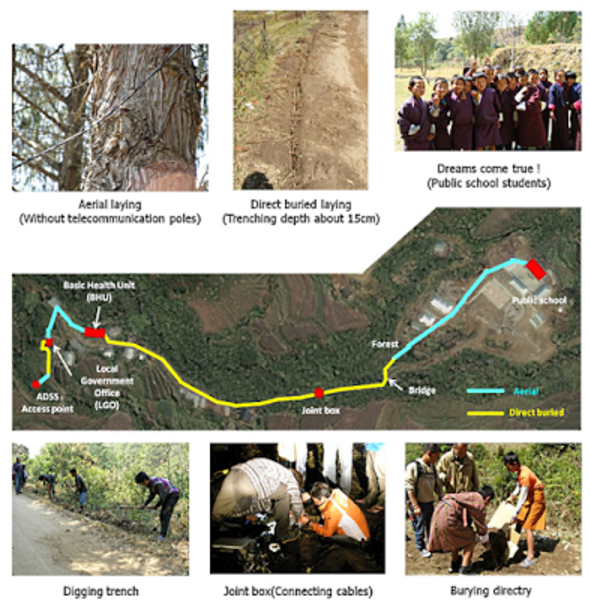aNewDomain — Back in 2013, volunteers in rural Bhutan connected an elementary school to the Internet using optical fiber in the last mile. The key to their success: metal-packed armored cable (M-PAC).
Modeled on undersea cables, M-PAC cable can be installed by even unskilled volunteers. At about four millimeters in diameter, it’s light, flexible and it doesn’t have to be in a protective duct.
Check out the shots below. As you can see, a portion of the cable to the school is buried in a hand-dug ditch, and another link is suspended overhead.

OCC Corp. supplied the cable used in this installation.
But last June, the International Telecommunication Union (ITU) adopted a standard for “low-cost sustainable telecommunications infrastructure for rural communications in developing countries.” It’s called L.1700.
As a framework standard, L.1700 is largely technology-neutral. You’ll find tech-specific best practices in texts like the ITU-T L Supplement 22, which specifies the design of a low-cost, terabit-capable optical cable. That cable is deployable on ground level, and with minimal expense and environmental impact.
For more on the standard and its intended application, check this post.
We have major fiber backbones in large cities. Do-it-yourself backbones in rural areas won’t be far behind.
For aNewDomain, I’m Larry Press.
An earlier version of this post ran on Larry Press’s CIS41 site. Read it here.













